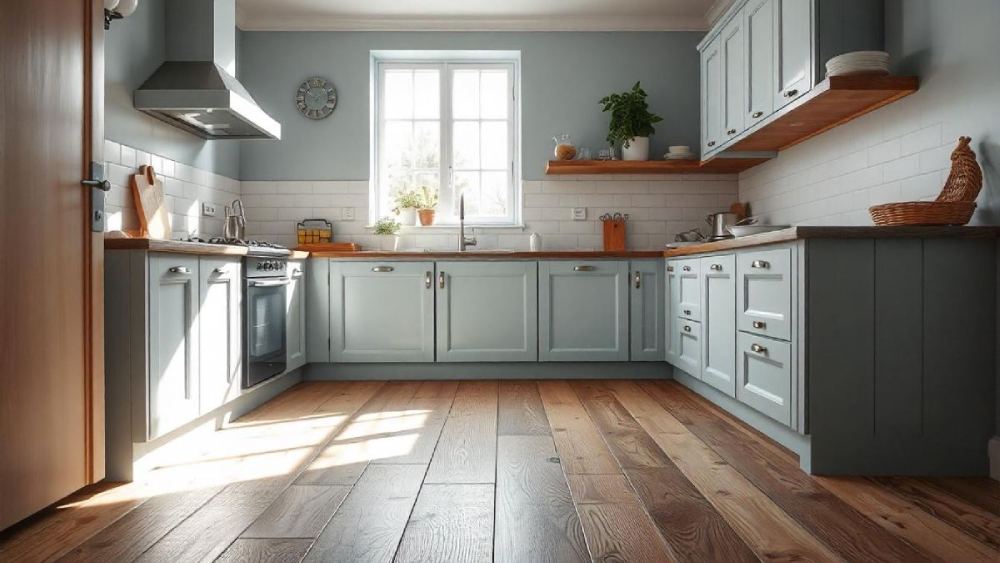When deciding about the best flooring option for your home or office, there are always various options that have their advantages and disadvantages that can make this selection process trickier. However, important factors like durability, cost, water resistance, and appearance should be considered when choosing the best flooring type. Vinyl tiles and ceramic tiles are two common choices that are always on the list of flooring options due to their unique features. In this article, you will learn more about each of them to have a better view of these two flooring choices which help you choose the right flooring type for your place.
1. Durability comparison: Vinyl tiles vs. ceramic tiles
Ceramic tiles are well known for their long-lasting durability. This flooring type is highly durable against stains, scratches, wear, and tear. However, ceramic tiles can crack under high pressure or in uneven subfloors. On the other hand, vinyl tiles can withstand high pressure and high foot traffic without getting cracked. This type of flooring, especially luxury vinyl tiles (LVT), is highly resistant to scratches and dents. However, they may get damaged by sharp tools or furniture without protection.

2. Water resistance in vinyl tiles vs. ceramic tiles
Both vinyl tiles and ceramic tiles are fully water resistant. Ceramic tiles are naturally water-resistant, which is why they are one of the most common flooring options used in kitchens and bathrooms. However, the lines between tiles (grout lines) can absorb moisture if they are not carefully sealed. Vinyl tiles are a great option for places that are prone to humidity and spills. Their solid surface prevents any liquid absorption which leads to mold or mildew risk reduction.
3. Vinyl flooring vs. ceramic flooring easy installation
For ceramic installation, professional installation skills and suitable preparation is required. The whole process includes subfloor levelling, ceramic tile cutting, and grouting which all need enough time and patience. Unlike ceramic, vinyl installation is easy to implement, and with peel-and-stick vinyl tiles or click-lock technique, the whole installation process is simple and does not need specialized tools or professional experience. However, it is always recommended to consult a flooring expert before doing this process on your own.

4. Cost differences between vinyl tiles and ceramic tiles
Ceramic tiles are often higher in cost, as they require extra effort in the installation. However, their longevity can justify the investment for the long term. On the other hand, vinyl tiles are a cost-effective flooring solution and offer a wide range of models and styles suiting any budget. Vinyl tiles are generally budget-friendly compared to ceramic tiles.
5. Design choices: Vinyl tiles vs. ceramic tiles
Ceramic tiles provide a classic and elegant appearance and they are available in various models with a wide range of textures, colors, finishes, and patterns, reflecting stone and wood effects. However, the grout lines may make the whole appearance not look seamless. Vinyl tiles offer a more modern look with hardwood or marble effects, and due to their seamless appearance, they are a perfect option for different interior designs.

6. Maintenance requirements for vinyl tiles and ceramic tiles
Ceramic tiles are easy to maintain, but they need regular grout line cleaning to avoid color changes and to maintain their appearance. In addition, the grout lines need periodic sealing to prevent water absorption. Vinyl tiles are popular for their easy maintenance. With regular sweeping and mopping, you can easily get rid of any stains or dirt and keep the vinyl tile flooring fresh and clean like the first day. Thanks to their grout line-free structure, they do not need extra effort for regular grout sealing.
💡Read more about vinyl flooring maintenance.
7. Environmental impact of ceramic tiles vs. vinyl tiles
Ceramic tiles are made of natural materials which makes them an eco-friendly flooring option. Due to their durability and longevity, they do not need frequent replacement and if needed, they can be recycled at the end. Vinyl tiles are made of synthetic materials like PVC which makes them a less sustainable flooring option. However, there are some modern vinyl tiles that are made of recyclable materials to reduce their environmental footprint.
Conclusion
Vinyl tiles and ceramic tiles are two common and popular flooring types that are suitable for different parts of your property or business. If you are looking for a durable, timeless, and environmentally friendly option for your place that can withstand high foot traffic and be used in moisture-prone areas, you can go for ceramic tiles. If you are looking for a modern flooring option that is affordable, easy to maintain, and easy to install along with various finishes and styles, vinyl tiles are the best option for you. If you still need more help in choosing the best flooring option between ceramic or vinyl tiles or any flooring installation services, you can contact MA Flooring in Melbourne for a professional consultation with flooring experts.

